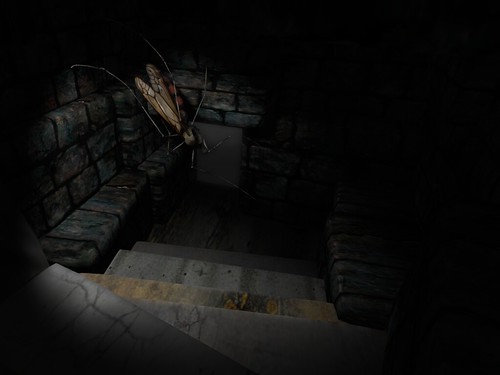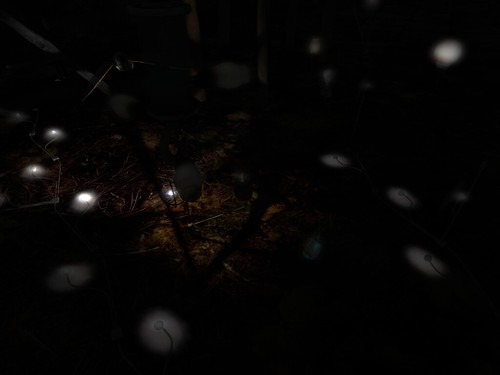Friday, February 28, 2014
The Singularity of Kumiko: Spotlight Vignettes
I've been circling Bryn Oh's Singularity of Kumiko for quite a while, starting with a very straightforward walkthrough and then some personal responses that rather went on it's own tangent, rather than staying focused on Kumiko and the art itself. This is at least in part because the heart and tenor of the art is so elusive, both due to Bryn Oh's signature tenuousness of storyline, which comes through even when she's leading you from place to place, as she did in Standby, where each scene of the story was in a different location and progression was linear. The use of black as both a backdrop into which we can immerse ourselves, and as a way of highlighting discrete flashes of story remains, however, and now the backdrop is not only built into the creation of these stories, but also extends so broadly that the little candle-glows of story can lurk like will-o-the-wisps in the darkness, and tucked around corners and behind walls. She also makes an entirely striking use of glow, which traditionally has a garish effect. Some of the walls at various points are set to white glow, which in any other windlight would be bright enough to blind, but in the darkness Oh has created, the stone comes off as just slightly brighter than the surrounding stones in a subtle manner. The physical details, the effects, even the near-automatic analysis of why and how it works, are relatively easy to describe. What I'm struggling with far more is my emotional response.
I found the Singularity of Kumiko more emotionally arresting than any of Oh's art so far. I have always enjoyed what she did, and felt like she was pushing the boundaries of virtual art, but something about the combination of seeing the images through the darkness and the way the story plays out - how it is about the basic value of human life, the relationship between authenticity and ends, and the dynamics of relationships, where out of love people can sometimes rush over the right of consent of the people they love. I found myself identifying very strongly with Kumiko, lost and confused in the dark and yet finding beauty in the detritus of her lost life. I knew the story of the bees, though it brought to mind another story I heard -a bout how the native bees in North America were singular bees which operate very differently from honey bees, and yet still served the purpose of pollination (and can pollinate the apparently very picky tomato plant). It's a reminder of how interwoven we and the world is - far beyond what we can easily see. Kumiko's very human concern about loving something which is made by humans, which is made specifically to mimic love, is such a striking and timely issue, and I feel like it has roots down into the core of what it is to be a person. I don't have any answers to this response, or even an easy way to describe the deep, melancholy disquiet I feel when I walk over the land and through the darkness.
( More pictures here. )
Subscribe to:
Post Comments (Atom)




No comments:
Post a Comment